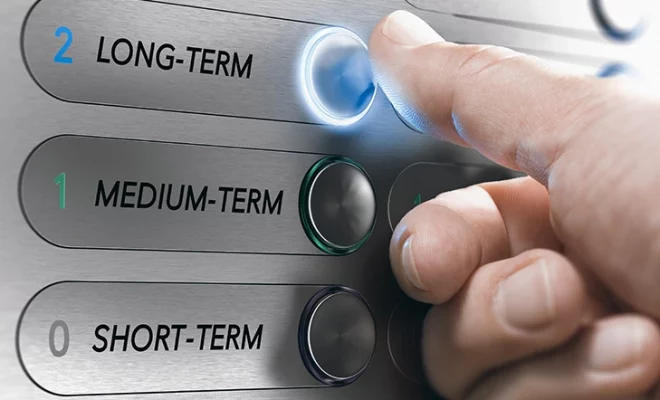All You Need to Know About Portfolio Diversification

No investment can indeed be 100% risk-free, but a diversified portfolio can reduce the chances of risk by a significant percentage. The concept of diversification is simple. No two markets or securities function the same way. So even if you suffer losses in pharmaceuticals, you can still earn a profit in technology or real estate.
As an investor, you need to spread out your portfolio and include different types of investments. This can consist of multiple sectors, industries, or securities. A diversified portfolio does not always guarantee huge profits, but it reduces your chances of loss.
Table of Contents
Why is it important to diversify?
Imagine a scenario where you put all your money into real estate under the assumption that property rates will always be on the rise. If a recession hits the market, real estate prices are likely to crash. Now, if you need money during this period for any emergency, your investment in real estate can result in a considerable loss.
This is why diversification is essential. When you invest in different investment methods, your chances of risk go down. It is very rare for all markets to crash at the same time. So, you can always balance out poor returns with other savings and investments on your portfolio.
If you are new to the concept of diversification and do not know where to begin, here’s a step by step guide to help you diversify your portfolio.
Step 1: Add diverse investment vehicles to your portfolio
If you are confused about what investments to add to your portfolio, you can simply refer to the following list:
- Index funds, Mutual funds and EFTs: The easiest way to diversify your portfolio is to invest in mutual funds or index funds. These offer diversification across various stocks and sectors.
- Bonds: They provide regular interest or income on your money and are safe. Although bonds are quite steady, they offer lower long-term returns. If you wish to invest in bonds, the U.S Treasury bond is a good option.
- Certificate of Deposits: These are undoubtedly one of the most stable investment methods out there. They offer high returns but can lack liquidity.
- Money Market Account: If you need more liquidity in your assets, you can consider money market accounts. They provide lower returns than bonds but offer easy accessibility to your money. They also come in handy in case of a financial emergency.
- Real Estate Investment Trusts (REIT): Via REIT, you can invest in companies that operate in real estate. These trusts also provide a great cushion from rising inflation.
- Commodity funds: Investing in commodity funds like gas, gold, oil etc., is another great way to bring in high yields. These products are always high in demand and unlikely to bring in loses.
- Foreign stocks: These may function differently than domestic stocks, but can be profitable if monitored closely.
Step 2: Choose between aggressive and conservative investing
The more risk you take, the more aggressive your investment is considered. Likewise, a portfolio that denotes less risk is called a conservative portfolio. If you are an aggressive investor, you should invest 50% to 55% of your money in equities, 35% to 40% in fixed income securities, and 5% to 10% in liquid assets, cash, etc.
If you are a conservative investor, you should invest at least 70% of your money in fixed income securities like treasury notes or certificates of deposits, 15% to 20% in equities, and a maximum of 15% in liquid assets, cash, etc.
Step 3: Analyze your age and current financial standing
Most financial experts follow a simple rule of age while drafting a portfolio. All you need to do is subtract your age from 100. For example, if you are 40 years old, your ideal equity allocation should be around 60% (100-40). The older you are, the lower should be your equity allocation. Younger investors, on the other hand, have more years on their side to overcome turbulences of a risky portfolio.
Your age and your current financial standing play a key role in determining your risk capacity. Younger people have the advantage of time but may lag behind in earning capacity. Older people have established careers and may earn more but fall short on the time front.
Step 4: Review your portfolio periodically
Perhaps the most critical step in building a portfolio is to keep it up to date. The market is ever-changing, and so is your risk appetite. With time you are likely to earn more money and may have different future goals than what you did five years ago. Therefore, it becomes very important to review and make suitable changes to your portfolio regularly. Your equity allocation ratio also changes with age.
When you revisit your portfolio, look for assets that are over-weighted or under-weighted. If your portfolio is dominated by fixed security stocks but your age allows you to make more equity investments, then you should rethink your investment strategy. Tax implications can also change over time with changes in federal laws. It is important to study all these factors when reviewing your portfolio.
To sum it up
Saving money in the bank is advisable, but if you really want to see your money grow, you need to invest it. Even though the idea of an investment may sometimes sound scary, you can reduce the risk factor with proper diversification. Different stocks and sectors follow different market trends. So, your overall investments can be largely unaffected even in a volatile market. But always keep in mind that diversification does not guarantee anything, it only provides a little cushion from the many uncertainties of the market.
Do you need help in diversifying your portfolio? Consult financial advisors to find out which investments will suit you the most.



















